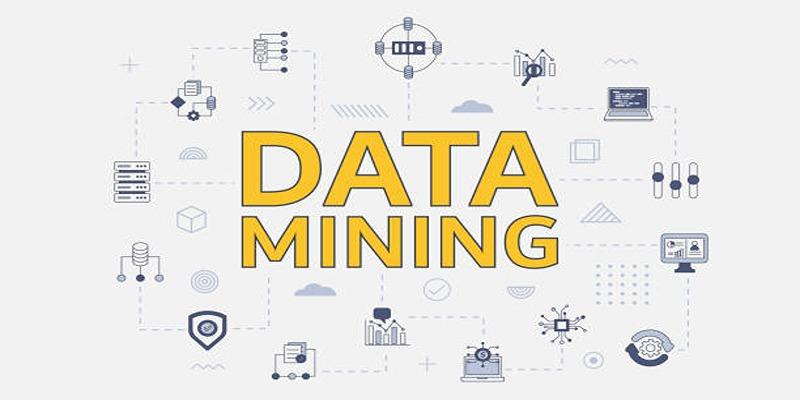Companies are producing 2.5 quintillion bytes of information every minute, and the majority do not take full advantage of the information. Data mining transforms raw data into actionable information to make smarter decisions, smooth out operations and increase profits. Organizations that employ these processes have experienced as high as 23 percent revenue increase and 19 percent efficiency increase. This guide will discuss practical applications and ideas on how to use the potential of intelligent data analysis.

Data mining is the field that produces useful results, patterns, trends, and relationships within large datasets; this is done via the use of complex algorithms and statistical methods. In contrast to traditional data analysis, which concentrates on the past reporting, data mining tells the future and reveals the hidden value.
The process involves several key components:
Data mining revolutionizes how businesses understand and serve their customers. Advanced algorithms analyze purchase histories, browsing behaviors, and interaction patterns to create detailed customer profiles.
Retail giant Amazon uses collaborative filtering algorithms to power its recommendation engine, generating 35% of its revenue through personalized product suggestions. The system analyzes millions of customer interactions to predict what individual shoppers want before they know it themselves.
Modern supply chains generate massive amounts of data from sensors, GPS tracking, inventory systems, and supplier networks. Data mining algorithms process this information to optimize every aspect of the supply chain.
Predictive analytics help businesses forecast demand more accurately, reducing inventory costs by 15-20% while improving product availability. Algorithms analyze seasonal trends, economic indicators, and consumer behavior patterns to predict future demand with remarkable precision.
Financial institutions leverage data mining to detect fraud, assess credit risk, and ensure regulatory compliance. Machine learning algorithms analyze transaction patterns in real-time to identify suspicious activities within milliseconds.
Credit scoring models use hundreds of variables beyond traditional factors like income and credit history. Alternative data sources including social media activity, mobile phone usage patterns, and online shopping behaviors provide more comprehensive risk assessments.
Data mining transforms HR departments from administrative functions into strategic business partners. Predictive models identify which employees are likely to leave, enabling proactive retention strategies.
Recruitment algorithms analyze resumes, social media profiles, and assessment results to identify candidates most likely to succeed in specific roles. These systems reduce hiring costs by 40% while improving employee quality and retention rates.
Natural language processing algorithms extract insights from customer reviews, social media posts, survey responses, and internal communications. Sentiment analysis helps businesses understand customer opinions and market perception in real-time.
Brand monitoring systems track mentions across thousands of online sources, providing immediate alerts about potential reputation issues. Companies can respond to customer concerns faster and more effectively than ever before.
Business data often follows temporal patterns that traditional analysis methods miss. Time series algorithms identify seasonal trends, cyclical behaviors, and anomalies in business metrics.
These techniques power demand forecasting, financial planning, and operational scheduling. Retail chains use time series analysis to optimize staffing levels, inventory management, and promotional timing.
Successful data mining requires robust infrastructure capable of handling large volumes of diverse data types. Cloud platforms like Amazon Web Services, Microsoft Azure, and Google Cloud provide scalable computing power without massive upfront investments.
Data lakes store structured and unstructured data in native formats, enabling flexible analysis with batch processing for deep insights and real-time streaming for instant results. Modern data warehouses, with columnar storage and in-memory processing, ensure faster, optimized analytics performance.
Organizations must develop both technical skills and business acumen to succeed with data mining initiatives. Data scientists need deep statistical knowledge, while business analysts require domain expertise to interpret results correctly.
Training programs should focus on practical applications rather than theoretical concepts. Hands-on workshops using real business data help employees understand how data mining techniques apply to their specific roles.
Poor data quality undermines even the most sophisticated algorithms. Organizations typically spend 60-80% of their data mining effort on cleaning, formatting, and preparing data for analysis.
Automated data quality tools can identify inconsistencies, duplicates, and missing values across multiple data sources. These systems save significant time while improving the reliability of analytical results.
Data mining initiatives must balance analytical insights with privacy protection and regulatory compliance. Techniques like differential privacy and data anonymization enable valuable analysis while protecting individual information.
Governance frameworks should define clear policies about data usage, access controls, and analytical limitations. Regular audits ensure that data mining activities comply with regulations like GDPR, CCPA, and industry-specific requirements.

Artificial intelligence and machine learning capabilities continue advancing rapidly. AutoML platforms will make sophisticated analytical techniques accessible to business users without deep technical backgrounds.
Real-time analytics will become the standard as streaming data processing technologies mature. Businesses will make decisions based on immediate insights rather than historical reports. Edge computing will bring analytical capabilities closer to data sources, enabling faster responses and reduced network costs. IoT devices and mobile applications will incorporate sophisticated data mining algorithms directly.
Data mining is a powerful tool for modern businesses, offering competitive advantages through better decision-making, efficiency, and customer insights. Start with a clear business problem and focus on areas where insights drive measurable results. Collaborate with expert data scientists to avoid pitfalls and build internal expertise. With commitment and strategy, businesses can unlock the immense potential of data mining and thrive in the data-driven era.

Explore how Advanced Topic Modeling with LLMs transforms SEO keyword research and content strategy for better search rankings and user engagement.

How to evaluate Agentic AI systems with modern metrics, frameworks, and best practices to ensure effectiveness, autonomy, and real-world impact in 2025.

AIOps redefines IT operations by leveraging AI to reduce costs, enhance efficiency, and drive strategic business value in a digital-first world.

Selector is a versatile platform for anomaly detection and network security, using advanced AI for precise threat identification and prevention.

How IT monitoring platforms enhance system reliability, enable faster issue resolution, and promote data-driven decisions.

How AI-powered automation is transforming network operations, delivering efficiency, scalability, and reliability with minimal human intervention.

How AI enhances forecasting accuracy while addressing limitations like rare events and data quality through human-AI collaboration.

Find out how to stop X from using your posts to train its AI models.

Explore how ChatGPT’s AI conversation feature works, its benefits, and how it impacts user interactions.

How data mining empowers businesses with insights for smarter decisions, improved efficiency, and a competitive edge.

Google’s Gemini Live now works on most Android phones, offering hands-free AI voice assistance, translations, and app control

Google’s Gemini 2.0 boosts AI speed, personalization, and multi-modal input with seamless integration across Google apps